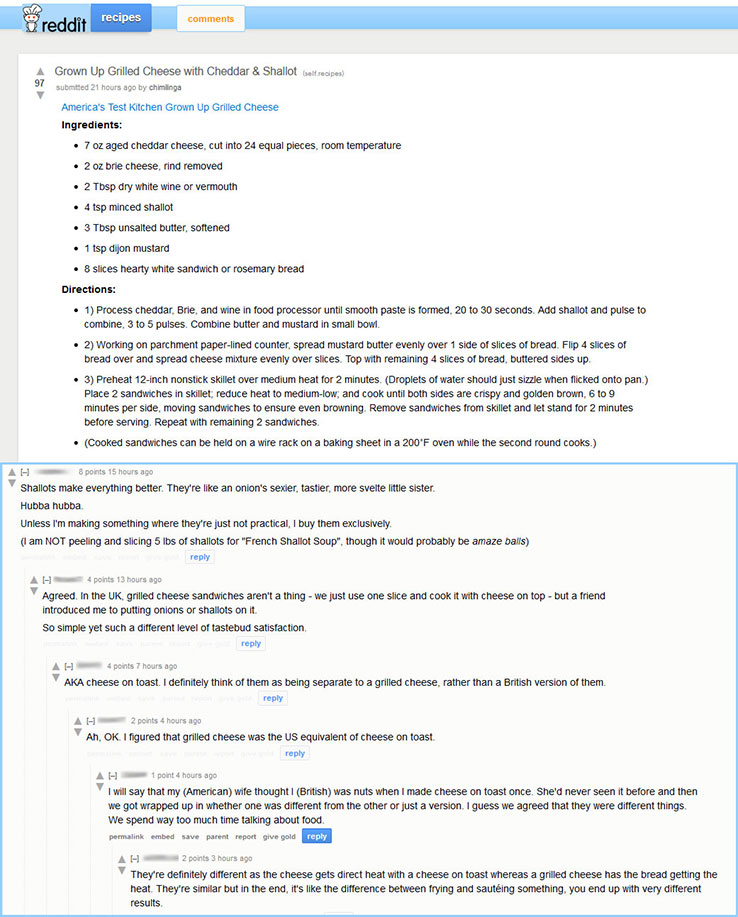In the era of Instagram, Yelp, Twitter, Facebook, Reddit etc. we are all living a very fast paced and often real-time online existence. I know nothing new there, but the thing that constantly surprises me is how many businesses are missing out on this integral piece of the marketing puzzle simply by not communicating appropriately within these networks. Increasingly social media platforms are helping business owners along this path (or maybe pushing them down it) by awarding them for fast response times. I know many who don’t like this stat being broadcast to their users and I understand the resistance as it can feel a little like someone airing your internal business but there is value in this whether you like it or not. The value is quite simply this; this push is forcing those businesses who were resistant to the current world of real-time (or at least very close to it) communication to get on the band wagon and keep up with the times. Now I am not saying that you must have a 5 minute response time, and I will note that different businesses types have different expectations on this, but you do need to let your users know that you are engaging on a regular basis so that they know that reaching out via a social channel is a viable way to communicate with you. The user needs to know that you haven’t just thrown up a profile and walked away.
It’s important to remember that not all social platforms are the same and not all loudly broadcast response times so what about those that keep this info a little more private, do you need to still care? Yes, yes you do. This isn’t really anything to do with making Facebook happy (though admittedly that does help) but it is more to do with keeping your user happy because in the end, they are buying your product … or not buying it. So how do you most effectively engage and communicate in real-time (or as close to it as possible) on social media? I’ll answer that question with my top 5 “What To Do’s” and “What Not To Do’s” to help you along your way.
What To Do:
e.g.
User – “Hi there, I was just trying to view your menu online and for some reason the link to it isn’t working. I have a dairy allergy and wanted to see your options. Can you tell me what dairy free items you have available on your dinner menu?”
Business - “Hi John thanks so much for reaching out! I’m really sorry that the link isn’t working for you, I will alert our tech team right away about this issue and have it fixed asap! I unfortunately don’t have access to our dinner menu right at this moment but I would be happy to have someone send it through to you within the next 30 min. if you would like.I completely understand the difficulties of dining out with a food allergy, it can be tricky for sure. Please note that our chef is always happy to make changes to our menu items to accommodate for allergies as well. Would it be best for me to send the menu to you here or would you prefer I email it to you? Just let me know and I’ll get right on it! - Jane”
2. Do use comfortable language, not overly stuffy or typically “professional”. Social media communications are much more casual than a front desk type of communication or even phone communications. Keep in mind too that when a customer walks up to a smiling face in a store they feel a connection via body language and when a customer places a phone call they can feel a connection via tone of voice, laughter, etc. but when a customer’s first communications happen via text this connection comes in the form of tone and language as the smiling face can’t be seen nor the happy voice heard. In the example conversation above in #1 we accomplish this rule by simply having a first person conversation and addressing the user by his name, finding a connection point (understanding the difficulty) and ending the conversation with my name. I also chose to use language that was slightly more casual while still remaining professional. Here is an example of the same response from the business but done the more traditional way.
e.g.
“Hello, thank you for alerting us to this issue. We have forwarded this off to our technical team and they will be addressing this problem. We will let you know when the issue has been fixed so that you can view our menu at that time. Please note that we do our best to accommodate food allergies where possible. We appreciate your business and hope to see you soon!”
As you can see here, there isn’t anything glaringly wrong with this reply but it is completely impersonal and really doesn’t solve the problem and gives no expectation to the user on when they will have their question answered. The simple difference is that in one case the user feels special and in the other they don’t. So ask yourself, which would you respond better to?
3. Do monitor ALL communications and posts relating to your business! The importance of this step cannot be underestimated. You must be monitoring your social networks at all times not only to be sure that you are engaging with your users and being helpful but also to be sure that you are on top pf negative attacks. If you have one angry socially savvy customer and you aren’t monitoring things it can blow up very fast into something that becomes incredibly difficult to manage. You need to actively be looking for all mentions of your business via posts to page, comments on posts posted both by yourself or others, posts that you are tagged in, hashtags relating to your business name, direct messages and user reviews. As you can see, there is a lot to keep track of so setting up some alerts and using tools to help you monitor your mentions is very helpful and recommended!
4. Do respond to all posts whether they be positive or negative. You must engage in a positive way with your users even when that’s the last thing you want to do. Responding to negative feedback is your opportunity to not only possibly bring a customer back but also to show to others that you care and are responsive to concerns. Likewise, responding to positive feedback is a great way to let your customers know you appreciate them. Remember to keep the human element alive in these communications again as mentioned before and when possible use language that helps the user know you know who they are by using names and including details relevant to their unique interaction. Leaving a post hanging in limbo leaves a user feeling unheard.
5. Do be aware of time sensitive details in your communications as this will affect the best language used. A great example of the importance of this is the following:

What we see here is a reply that happened the day after the post was made by the user and the guest had in fact checked out at this point. The comment from the business is not personal, it does not address the actual user’s post in any way and it is highlighting the fact that they do not know that the user is no longer even at the hotel. If the hotel is using a social media manager that does have access to bookings that person should look up the name of the user and see if they are is still at the hotel which would allow a very personalized comment along the lines of “So glad you liked it! See you again tomorrow morning for more deliciousness!”. Additionally you could even further engage by adding another element of personal interaction with a further comment of something like “PS – Did you try the chocolate pastries? They are so good!” but this would also require a much faster reaction, not the next day as happened in the above example. If the social media manager does not have access to the user information necessary for a comment like the above one and there is a long time delay then something more along the lines of “So glad you liked it! All of us here think it’s pretty delicious too :)” would be a great way to still be personal with no need for the more in-depth user details.
As this example shows, there are some significant “Not To Do’s” to note as well so I will use this as a nice segway into that realm.
What Not To Do:
1. Do not write an essay response. It’s great to engage in conversation and provide the information requested but be aware of the expectations of text block sizes in social media. Unlike an email reply which can be very detailed and lengthy with bulleted points and paragraph breaks, social media interactions whether they be public or private are delivered in short concise pieces. When you break your communications into smaller blocks you will create more of a conversation flow as opposed to throwing information at the user. You also stand a much higher chance of the user actually reading your full response when you deliver it in small pieces.
Social media interactions are quick and not prone to in-depth reading sessions so play to this. If your response requires extensive details, such as directions to an establishment, then offer the user the ability to provide you with an email address so that you can “send the information directly to them in a way that will be easy for them to print if desired and referenced in future”. All social media interactions should be easily digested and conversational. The only exception to this may be in responses to user reviews as those are generally more lengthy pieces on both the user and business side.
2. Do not mistake relating to users in a personal way with being “friends”. I know I just encouraged you to step away from an overly professional type of language and to approach your users with a more casual, personal tone but that does not mean to throw your professionalism out the window. What we are doing here is simply evolving our professionalism to relate to the current users and trends. We are still a business and our personal feelings and goings on should be left outside of our business space.
e.g.
User Post:

Business Response:
Do – “Thanks for stopping in for lunch today! Glad to have met another sushi lover in this beautiful city of ours :D Hope you had a lovely ferry ride!”
Do not – “Thanks for coming in for lunch today! Happy to see more people choosing sushi over crappy ferry food. Seriously, I think I’d rather starve than eat some of that food.”
3. Do not assume that every social platform has the same audience and way of interacting. What works on Facebook is not what works on Reddit. Likewise users on Twitter are more likely to expect an immediate response than those on Yelp. You must reach your users on their level, in their space, in their way to have the most successful interactions. So be sure to familiarize yourself with the different social networks so that you can get a good feel for the way that users interact with each other in each space and the expectation on response time frames. You can easily see in the example below how different the communication style can be from one platform to another. In this case you see that users on Facebook are much more prone to simply make a comment on a post while users on Reddit are far more likely to engage in a conversation, you will also note that the language used is very different from one network to the other. There is undoubtedly a learning curve to all of this and you will need to do your best learn how to reach your users on their level in order to have the most success possible in your social media engagement.
e.g.
Facebook:

Reddit:

4. Do not be lazy in your communications. Much like what I covered in #5 on my To Do’s, a lazy response is just as impersonal as and maybe even more so than no response at all. When a business replies with a stock comment which is easily spotted throughout a thread like “Thank you for your feedback!” copied and pasted a hundred times in a row or an impersonal comment like the one noted in #5 above that highlights the lack of understanding of who the user is, all this tells the user is that what they said and who thy are doesn’t really matter. Social media is all about connections and if your comment disconnects the user from you, you have in fact done yourself a disservice by replying.
5. Do not get defensive. It’s easy to have a knee jerk reaction to negative feedback, reviews, comments etc. but you must resist the urge to fight back. This may actually be one of the hardest areas of social media management for small business’ as often times those replying to reviews and comments are the business owners themselves and the ability to take a step back and not feel personally attacked is a lot harder for them than it is for a PR person. It is best practice to reply promptly to complaints HOWEVER you know yourself so if you happen to be having a bad day or know your personality dictates a cool off period be sure to give yourself the time you need to gather yourself and form an effective and positive response. The best practice is to reply promptly, positively and graciously to negative feedback on social media but do keep in mind if this is just not your day for that, then in the wise words of Thumper …
So if you cannot bring yourself to engage on a positive level even with a cool off period, either bring in a friend to help you out or consider this your moment to find a spot in your budget for a social media manager.
In conclusion, I encourage you to follow these simple steps to help improve not only your social presence but also your overall business image. For your ease of reference I will leave you with the below simplified version of the above more in-depth points and wish you happy communications!
Do:
- Reply as quickly as you can in a personalized way
- Use comfortable language
- Monitor all communications and posts relating to your business
- Respond to all posts whether they be positive or negative
- Be aware of time sensitive details in your communications
Do Not:
- Write an essay response
- Mistake relating to users in a personal way with being “friends”
- Assume that every social platform has the same audience and way of interacting
- Be lazy in your communications
- Get defensive
